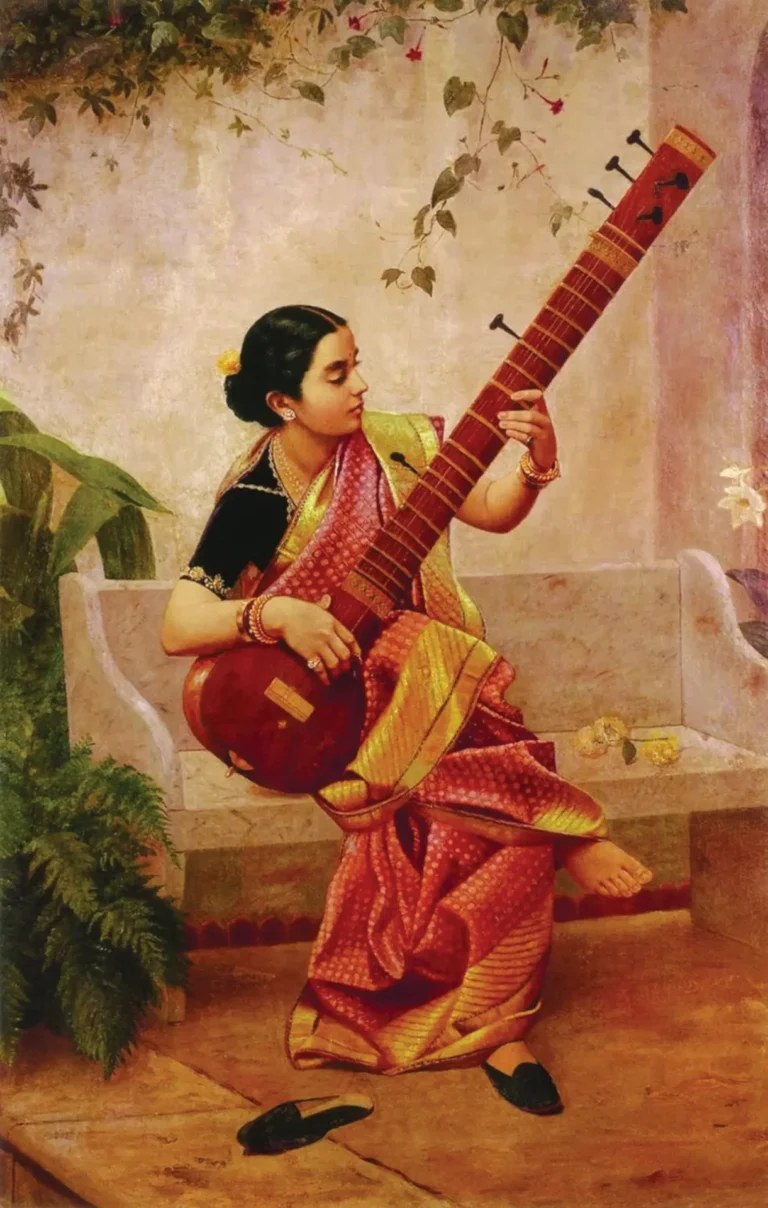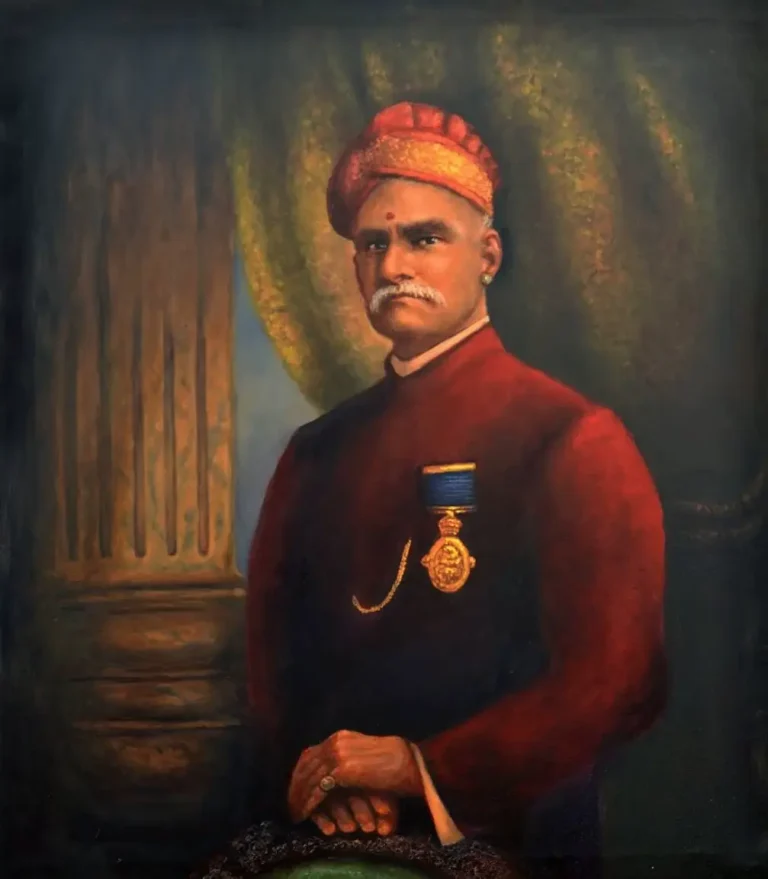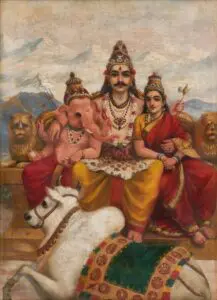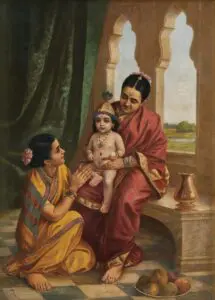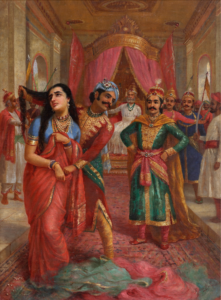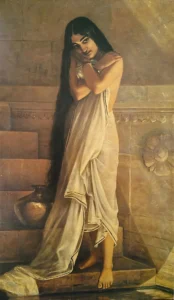Kadambari
Kadambari by Raja Ravi Varma depicts a graceful woman, believed to represent Kadambari, engrossed in playing the sitar. Her serene expression and poised demeanor convey a sense of harmony and elegance, as music fills the air. The painting holds a poignant place in the legacy of Raja Ravi Varma, as it is often believed to be among his final works before his passing in 1906. While the authenticity of whether this specific rendition was his very last creation remains uncertain, it captures Varma’s signature elegance and refined portrayal of grace.
Early 19th Century
About the Artwork
Raja Ravi Varma's painting Kadambari, also known as Music Hath Charms, is an oil on canvas work created around 1906, marking it as one of his final pieces before his death. The painting features a woman named Kadambari, depicted seated on a marble bench, deeply engrossed in playing a sitar. She is elegantly dressed in rich, colorful fabrics, adorned with fine jewelry, and surrounded by greenery, which enhances the serene atmosphere of the artwork.
Artistic Elements
- Subject: Kadambari, an aristocratic lady, is portrayed with her legs crossed and one slipper kicked off, suggesting a relaxed yet focused demeanor. She has flowers in her hair and additional flowers placed beside her on the bench.
- Collaboration: Raja Ravi Varma's brother, C. Raja Raja Varma, assisted in creating this piece, showcasing their collaborative artistic efforts.
- Cultural Significance: The painting reflects Varma's unique ability to blend traditional Indian themes with European artistic techniques, making it a significant contribution to Indian art history
Did You Know
Did you know that in traditional Indian culture, music was often seen as a medium to connect with divinity and self-expression? This makes Kadambari a nod to music’s transcendental value in Indian traditions.
In 1904, Raja Ravi Varma was awarded the Kaiser-i-Hind Gold Medal by the British Empire for his contributions to art.
Did you know that the sitar, featured prominently in the artwork, has its origins in ancient string instruments of South Asia, evolving over centuries into a mainstay of Indian classical music? Varma’s use of it reflects both pride and reverence for cultural heritage.





